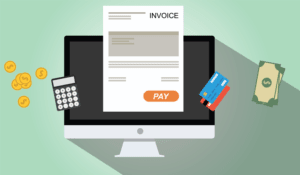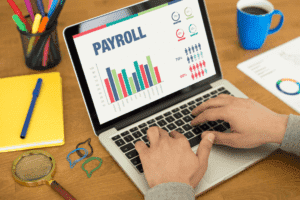
Effective cash flow management means ensuring that the incoming cash is sufficient to cover these outgoings. A detailed cash flow forecast, or projection, helps restaurant and pub managers plan ahead to ensure all outgoing payments can be made, and slow periods of trade don’t have too much impact on their bottom line. Understanding how cash moves in and out of your restaurant or pub is the first step towards creating a reliable cash flow forecast.

So, what is a restaurant cash flow?

It looks primarily at payments coming in bookkeeping and payroll services and expenses going out of the business, such as a restaurant. You need to keep track of daily sales and expenses to understand your restaurant’s cash flow patterns. Using restaurant management software or POS systems to track transactions accurately is a good idea.
- Hiring a bookkeeper or an outsourced bookkeeping service will make this task more manageable.
- A restaurant’s profit and loss statement (P&L) consists of several key components that provide insight into the restaurant’s finances.
- Identify over-ordered stock, which foods are most often wasted, or whether you have an in-house theft problem.
- Please bear with us as we address this and restore your personalized lists.
Look for a bookkeeper who has knowledge and experience in the restaurant industry
Using a CRM platform, such as Acteol can help you reach the right people, with the right message at the right time and drive the revenue you need to make your event a success. restaurant cash flow ROI data from your event – which customers responded, what they bought, and how much they spent, can be used to create targeted campaigns for the future. Put simply, cash flow is the amount of money that comes in and goes out of a business over a specific period of time. To calculate your cash flow, add together all the costs your restaurant needs to pay out and subtract this figure from the money you have coming in. For multi-location operators, in particular, restaurant accounting technology can prove especially beneficial. The restaurant cash flow statement records incoming and outgoing cash over a defined period of time, typically a quarter or fiscal year.
Step 4: Track labor expenses

This means predicting how much money you will have coming in and going out of your business in the future. By forecasting your cash flow, you can anticipate any cash flow gaps and take action to avoid them. Outsourcing your bookkeeping to a team of trained professionals means that your restaurant’s financial data is always accurate and up to date. This gives you visibility on how your business is performing and allows you to accurately track all of your expenses, revenue, and the health of your cash flow. While this may sound like a complicated endeavour, there are a few simple tips that you can follow to keep your cash flow out of the red and improve your business’s overall financial health.
Creating Cash Flow Forecast For Your Restaurant (Free Template)
Identify and project upcoming expenses, including fixed costs like rent and variable costs like inventory. While the P&L and Balance Sheet are critical to understanding your financial health, they in themselves do not show the true impacts of cash. While expenses may be recorded in real-time as you pay your vendors, the vendor may not cash that check for several weeks – so while the expense is accounted for, the money is still in your bank. Operators can utilize the cash flow statement both internally and externally.
How to calculate your restaurant’s cash flow

The preference of millennials for spending on experiences, such as dining out, over purchasing items, emphasizes a growing market for the industry. However, restaurants face their unique set of challenges, especially in financial management. A significant proportion of small businesses, including restaurants, struggle with delayed payments, with 31% of owners reporting over 30-day waits, and an average of $53,399 in unpaid receivables. These factors underscore the importance of adept cash flow management to navigate through such financial hurdles and capitalize on market opportunities.
Your restaurant may be selling out every night, but if you’re spending more cash than you’re bringing in, you have a problem. Since sales happen every day, whereas expenses tend to trickle in over weeks and months, it’s tricky to truly know QuickBooks where you stand. Many restaurateurs turn to a business loan or use credit cards to cover their start-up costs. While the injection of cash will help get things moving in the right direction, repayment (with interest) becomes another line item on the expenses list.

